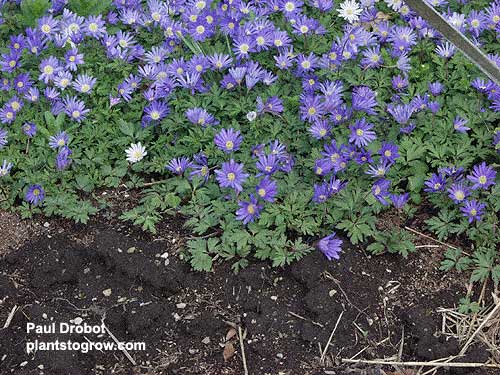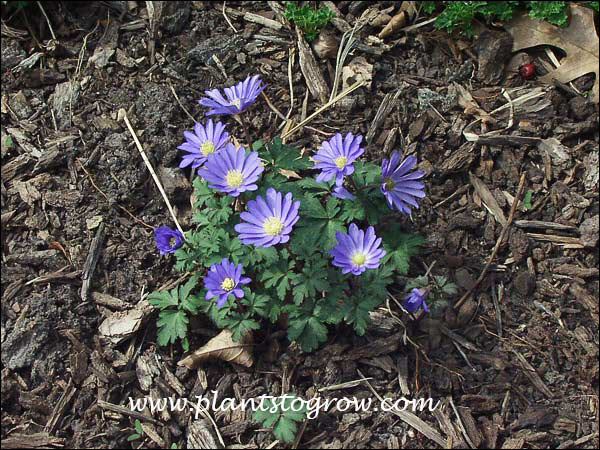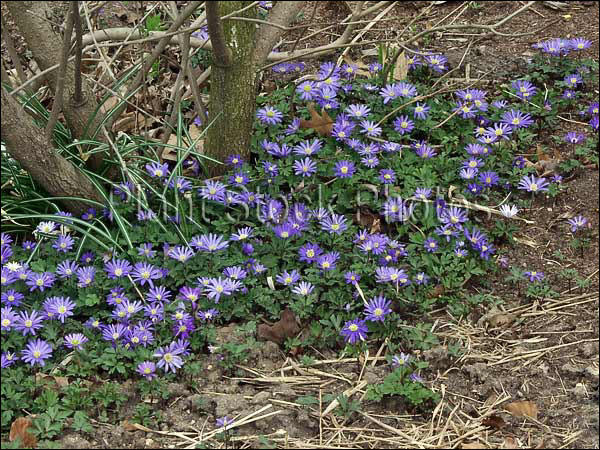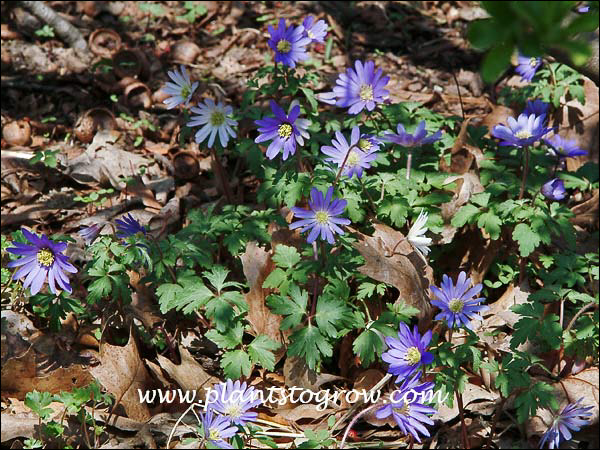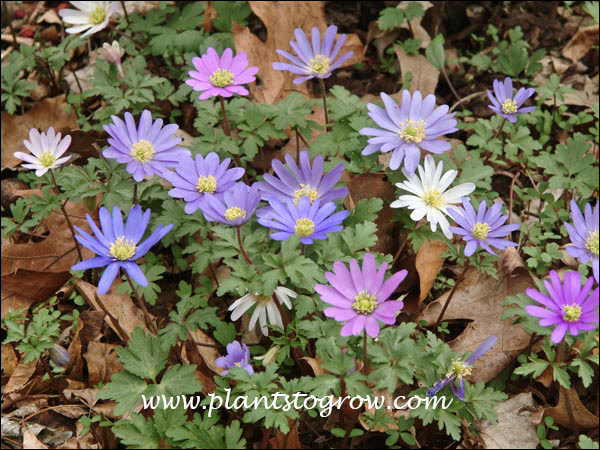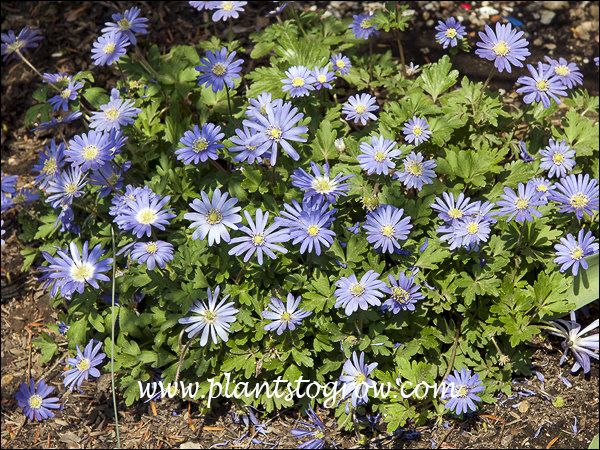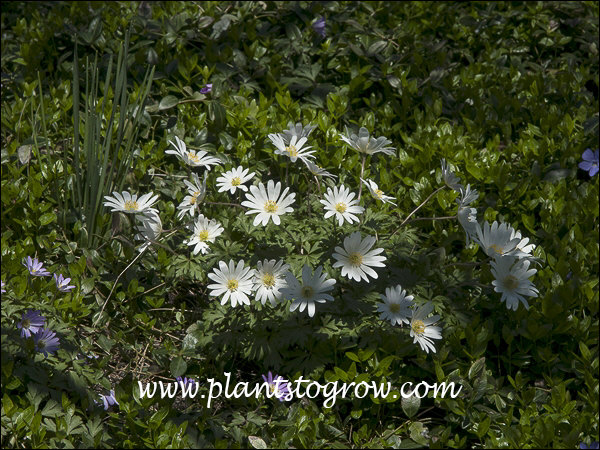| Description | A low growing plant with daisy-like flowers. Grows from a tuber not a bulb. |
|---|---|
| Pronunciation | (a-NEM-o-nee) |
| Plant Type | All Plants, Bulbs, corms, tubers, rhizoms, etc. |
| Sunlight | In zone #5 they can take spring sun, usually plant as an ephemeral under deciduous trees. |
| Moisture | average, moist, avoid dry sites |
| Soil & Site | average, moist |
| Temperature | cool sites |
| Flowers | 2" daisy-like, most common color blue but also, pink white and shades in-between |
| Leaves | finely divided with three lobes, leaves resemble parsley or ranunculus |
| Stems | forms a tuber, look like dried rasions |
| Maintenance | When opening a package of A. blanda tubers they will look like dried raisins. I wet the dried tubers over night in moist paper towels or peat moss. Plant about 2-3" deep with four or more per square foot. Will spread by reseeding |
| Propagation | seeds, division |
| Native Site | Native to areas from Greece through Asia minor to the Caucasus. |
| Misc Facts | Anemone from the Greek "anemone" wind and "mone" fo habitation. |
| Author's Notes | At a Botanic garden I frequent the planting of the Windflower are tucked in areas under shrubs, by walls, etc. Eye candy in the spring. Especially the waves of blue flowers. |
| Notes & Reference | #59-Naturalizing Bulbs (Rob Proctor), #113-Bulbs for Gardens Habits (Judy Glattstein), #146-Early Bulbs (Rod Leeds), #145-Plant Lives (Sue Eland) web site |

Cart
